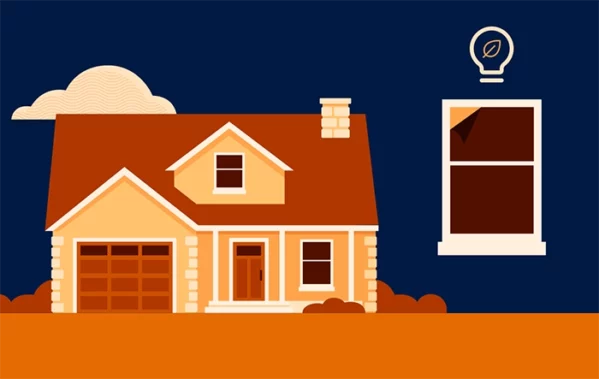Economic and industry news or trends
The Construction Beat: CDC creates rules confusion, help coming for short-handed builders and a lingering housing frenzy
Don’t dig for construction headlines. We’ve done the work for you.
We at Buildertrend know the industry moves fast – and want to help you keep up. Because we also know a more informed construction team is a more successful and inspired one. That’s why we deliver the most newsworthy updates, all in one place. With “The Construction Beat,” check out what’s been happening around the industry – and why it matters to you.
This week, we’ve got updates for you on job site impacts of the CDC’s mask rule change, encouraging news for construction crews, more on inflation’s effects on housing prices and how long surging home prices may last.

CDC mask rule change adds confusion at job sites
The Centers for Disease Control and Prevention shook up the pandemic landscape May 13 when it dropped its mask and social distancing requirements for fully vaccinated people.
CDC guidance considers someone fully vaccinated either two weeks following their second dose in a 2-dose series, such as Moderna or Pfizer, or two weeks after a single-dose vaccine, such as Johnson & Johnson. Despite this new guidance, employers and job sites remain subject to all active state and local restrictions, though many jurisdictions have started relaxing regulations based on the CDC’s guidance. Builders should check the restrictions in their area to ensure job site compliance.
But the CDC is not the direct authority for employers: that’s the Occupational Safety and Health Administration. OSHA, which ensures safe and healthy working conditions for employees, directed employers to follow the CDC’s guidance: “Refer to the CDC guidance for more information on measures appropriate to protect fully vaccinated workers.” Despite this, employers have been left wondering whether OSHA will release its Emergency Temporary Standard, originally scheduled for release in March. If OSHA’s ETS says anything contrary to the latest CDC guidance, employers will be forced to follow OSHA.
However, at this point, it seems less likely for OSHA to issue any form of standard at all. By directing employers to the CDC guidance as jurisdictions across the country ease restrictions, OSHA may have signaled its standard is no longer needed.

States end COVID aid in boost to short-handed builders
As the United States economy begins to recover, 22 states looking to end labor shortages will end receipt of federal COVID-19 unemployment benefits. Some states, such as Arizona, Montana, New Hampshire and Oklahoma, are taking greater measures by offering bonuses to unemployed workers who gain employment.
For the construction industry in those states, this comes as encouraging news. Construction across the country, particularly residential construction, has been thriving the past several months with an abundance of jobs, new projects and customer demand. Despite the available work, builders have struggled to secure labor, which has affected builders’ ability to competitively bid on jobs.
With the economy recovering and decreasing unemployment benefits, builders can anticipate a higher supply of labor in the coming months to respond to the thriving industry need.

Inflated costs push home prices up, cool housing starts
It’s not just lumber prices soaring – it’s everything. U.S. consumer prices rose 4.2% in April from a year ago. For homebuilders, continuous shortages and global supply chain disruptions are beginning to cool the otherwise red-hot U.S. housing market due to inflating costs. As a result, many would-be homebuyers are being priced out of the market.
While it’s difficult to predict the long-term effects of rising costs, it’s possible the market is just beginning to feel the ramifications. Homebuilders who are unable to keep up with demand may have to turn down projects, thus forcing would-be buyers to look to the market for listed homes. “A growing number of builders are limiting sales in order to manage supply chains, including access and cost factors associated with lumber, appliances, and other building materials” said Chuck Fowke, the National Association of Home Builders chairman. For example, in April, the housing market saw a 9.5% decrease in starts, bringing the seasonally adjusted annual rate of house starts to 1.57 million, well below the 1.7 million predictions from economists. Meanwhile, the prices of already existing houses continue to reach record highs. In a four-week period ending May 23, 51% of homes sold for more than their list price, up from 26% the previous year. During this same period, the average time on the market for a home was 17 days, down from 36 days last year at this time.
There are two schools of thought regarding inflated consumer costs. One school attributes the increases due to the Federal Reserve’s 2020-2021 policy decisions, including increased money supply and stimulus programs. The other school sees increased costs as the quirks of the pandemic-era economy.
For a better indication of how prices will affect the economy moving forward, consumers should watch the Consumer Price Index over the coming months with the next set for release on June 10.

US housing frenzy here to stay, CEO says
The United States’ housing mania continues. Home prices have surged at historic rates due in part to increasing consumer demand, ultra-low interest rates and a shortage of homes for consumers to buy. The S&P CoreLogic Case-Shiller National Home Price Index shows the average home sales price in major metropolitan areas rose 13.2% for the year ending in March 2021, up 12% from February 2021 – the highest annual rate of price growth since December 2005.
Despite dramatic rises in prices, home sales continued to decline in April because homebuilders are unable to keep up with demand. Builders point to labor shortages (some states are addressing by ending federal unemployment benefits) and supply chain issues (resulting in higher material costs) as the primary reasons for creating a backlog in housing demand.
But experts don’t expect the market to calm soon. Some anticipate the continued supply-demand imbalance ‑ which may take builders years to catch up on ‑ will continue to drive prices up for the foreseeable future. To understand how bizarre the market is, here’s what Redfin’s CEO Glenn Kelman has to say:
1 of 15: It has been hard to convey, through anecdotes or data, how bizarre the U.S. housing market has become. For example, a Bethesda, Maryland homebuyer working with @Redfin included in her written offer a pledge to name her first-born child after the seller. She lost. — Glenn Kelman (@glennkelman) May 25, 2021
Don’t miss out on construction news
Be sure to follow us on Instagram, Facebook, Twitter and LinkedIn to see when “The Construction Beat” delivers more of the latest, need-to-know headlines. For additional business resources and tips, check out our resource library of articles, customer success stories and podcast episodes.
Staying on top of construction news is all about staying on top of what’s best for your business. Let Buildertrend help.

Bathroom design trends in 2024
With life being so fast-paced, bathroom designs are embracing the concept of personal sanctuaries. Here are the latest bathroom design trends for 2024.

How window tinting can increase energy efficiency in new builds
Here are five reasons why home window tinting is becoming an increasingly popular choice for and energy-conscious enhancement on new builds.

The 2024 housing market outlook
In this 2024 construction industry update, Buildertrend’s in-house expert shares insight into the lock-in effect, interest rates and the labor shortage.
Want to contribute to our blog?
We believe in building a community for construction – sharing is a big part of that. If you have industry expertise or a story to tell, your voice can reach thousands here.

